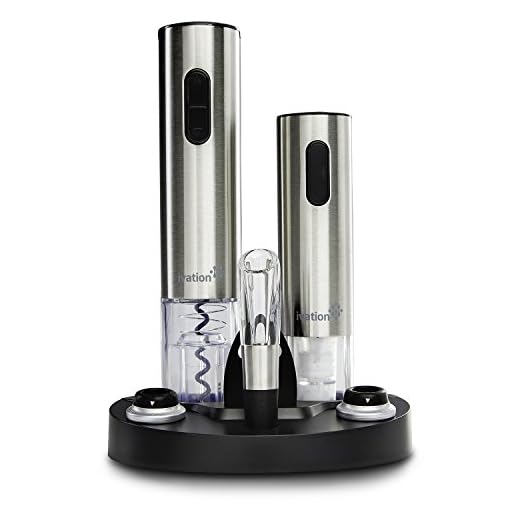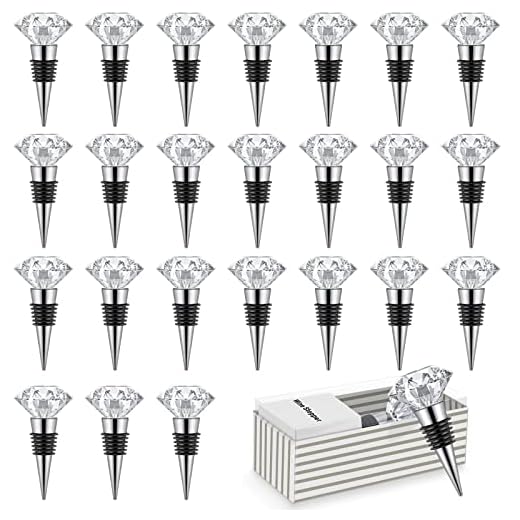



Opened bottles of this crisp beverage can maintain their quality for up to five days when properly stored in the refrigerator. Use a cork or a wine stopper to seal the bottle tightly, as exposure to oxygen can lead to rapid deterioration of flavors.
For optimal preservation, consider a vacuum pump to remove excess air before sealing. If you notice any off-putting aromas or a significant change in taste, it’s best to discard the remaining liquid. Keep in mind that various types, such as Sauvignon Blanc or Chardonnay, may exhibit different longevity after uncorking, often influenced by their acidity and sugar content.
Always pay attention to the characteristics of the specific variety you’re enjoying. A well-chilled temperature and proper storage can extend the enjoyment of your favorite selections, allowing you to savor each glass to the fullest.
Storage Tips for Opened White Vintages
Once a bottle is uncorked, it can remain enjoyable for about 3 to 5 days if stored properly. For optimal preservation, follow these guidelines:
- Re-cork the bottle tightly to limit oxygen exposure.
- Store upright in a cool, dark place, ideally between 45°F to 65°F.
- For extended freshness, consider using a vacuum pump to remove air from the bottle.
Utilizing a wine preservation system can further enhance the longevity of your opened bottle. If you find yourself with residual wine, sampling it within a few days ensures you experience the intended flavors.
Maintaining cleanliness in your storage area is also essential. For those with resin flooring, using the best scrubbers for resin floor helps keep your space pristine, allowing you to focus solely on enjoying your wine.
Factors Influencing the Shelf Life of Opened White Wine
Storage conditions significantly impact the longevity of an opened bottle. Aim for a cool, dark place, ideally between 45°F and 65°F. Fluctuations in temperature can accelerate the oxidation process.
Oxygen exposure directly affects freshness. The more air in the bottle, the faster the degradation. Using a vacuum pump can help remove excess air, extending the enjoyment period.
Sealing methods also play a key role. A cork will provide some protection, but consider using a specialized wine stopper that minimizes air contact. This can help maintain quality for a longer duration.
Type of closure matters as well. Bottles with screw caps often maintain their integrity better than traditional corked options, due to reduced oxygen infiltration.
Age and quality of the initial product influence its resilience. A high-quality varietal may withstand exposure better than a lower-grade option. Additionally, the acidity level and sugar content can affect how well a bottle holds up once opened.
- Temperature: Maintain a steady, cool environment.
- Oxygen Exposure: Limit air contact using pumps or stoppers.
- Closure Type: Prefer screw caps for better preservation.
- Initial Quality: Higher-quality wines often last longer.
- Acidity and Sugar: Higher levels can enhance durability.
By considering these factors, you can maximize the enjoyment of your opened bottle and explore the nuances of its evolving character over time.
Proper Storage Techniques for Opened White Wine
Refrigerate the bottle immediately after pouring. Keeping your opened beverage chilled slows down oxidation, preserving its taste and aroma. Even if the room temperature is pleasant, exposure to warmth accelerates spoilage.
Use a wine stopper or vacuum pump to seal the bottle. A proper closure minimizes air contact, which is crucial for maintaining freshness. If using a vacuum pump, remember to follow the manufacturer’s instructions to achieve optimal results.
Avoid direct sunlight. Ultraviolet rays can negatively impact flavor profiles. Store the bottle upright in a dark space or inside a refrigerator to shield it from harmful light.
Keep the cork in good condition. If the cork is damaged, consider transferring the remaining beverage to a smaller container to reduce air exposure. This method helps maintain quality for a longer period.
Monitor the temperature. Aim for a consistent, cool environment. Fluctuations in temperature can alter the composition and character of the liquid. An ideal range is between 45°F and 55°F (7°C to 13°C).
| Technique | Description |
|---|---|
| Refrigeration | Maintain a cool temperature to slow oxidation. |
| Sealing | Use stoppers or vacuum pumps to limit air exposure. |
| Light Protection | Store in dark places to avoid UV damage. |
| Cork Care | Keep cork intact; consider smaller containers if damaged. |
| Temperature Stability | Avoid temperature fluctuations for optimal preservation. |
Signs that Opened White Wine Has Gone Bad
Check for an off or sour smell. Freshly opened bottles should emit pleasant aromas, while a pungent or vinegar-like scent indicates spoilage.
Observe the color. A shift towards a darker hue can suggest oxidation. Fresh white should be bright and vibrant, not cloudy or brownish.
Taste a small sip. If the flavor has turned flat, overly acidic, or has a sharp bitterness, it’s likely time to discard it.
Presence of Bubbles
Notice any unexpected bubbles. Sparkling wine should have carbonation, but still wines shouldn’t effervesce. If you detect fizz in a still variety, it may have fermented in the bottle.
Changes in Texture
Feel for an unusual texture. A slimy or oily sensation in the mouth is a sign of microbial growth, suggesting that the beverage has spoiled.
Extend the Life of Opened White Wine
Seal the bottle tightly with the original cork or a wine stopper to minimize air exposure. This simple action significantly slows oxidation.
Store the bottle upright to reduce the surface area of the liquid exposed to oxygen. This method is particularly effective for bottles with a screw cap.
Refrigerate the opened bottle. Lower temperatures help to slow down chemical reactions, preserving the flavors and aromas for a longer period.
Consider using a vacuum pump to remove excess air from the bottle. This device creates a seal that can extend freshness by reducing oxidation.
Utilize an inert gas wine preserver. Spraying a small amount of inert gas into the bottle before sealing creates a protective barrier against oxygen.
Limit the time between pours. Pouring smaller amounts at a time can help maintain the overall quality of the remaining wine in the bottle.
Be mindful of the wine’s characteristics. Lighter varietals often have a shorter lifespan compared to more robust options, so adjust your storage techniques accordingly.
Lastly, consume the remaining contents within a week for optimal enjoyment. Keeping track of the timeline ensures you savor the best possible experience.
Comparison of Different Types of White Wine Longevity
Chardonnay, Sauvignon Blanc, and Riesling exhibit distinct characteristics affecting their preservation duration post-bottling. Typically, oaked Chardonnay maintains freshness for approximately 3-5 days, while unoaked versions can often last slightly longer due to their higher acidity. Sauvignon Blanc, known for its crispness, tends to remain enjoyable for 2-4 days. Riesling, especially those with residual sugar, may last up to a week, as the sweetness helps stabilize the wine against oxidation.
Oaked vs. Unoaked
Oaked varieties, such as certain Chardonnays, often possess more complex flavor profiles, yet they may oxidize sooner due to the natural tannins from the oak. In contrast, unoaked versions, with their vibrant acidity, can retain their qualities longer. The balance of acidity and sugar plays a critical role in determining how well a wine will hold up once exposed to air.
Regional Influences
The origin of the grape can also influence longevity. Wines from cooler climates, like those produced in the Loire Valley of France, typically have higher acidity and may last longer when opened. In contrast, wines from warmer regions, such as California, may be more fruit-forward but could oxidize more quickly. Understanding these nuances can greatly enhance your experience with opened bottles.
Choosing the right type can maximize enjoyment and minimize waste. It’s essential to consider these factors when selecting a bottle for an occasion, ensuring the best possible experience with every sip.
Tips for Enjoying Opened White Wine Over Time
Store opened bottles upright to minimize oxygen exposure, which can lead to oxidation and spoilage.
Consider using a wine preservation system. Vacuum pumps or inert gas systems can significantly prolong freshness by displacing air in the bottle.
Refrigerate your opened bottle, even if it’s red. Cooler temperatures slow down chemical reactions that cause deterioration.
Seal the bottle tightly with its original cork or a reusable wine stopper. This helps to keep air out and maintain quality.
Try to finish the bottle within three to five days. While some varieties may last longer, the best experience is often found within this timeframe.
Experiment with food pairings to enhance enjoyment. Pairing your beverage with complementary dishes can make the tasting experience more delightful.
Use a wine preservation spray if you plan to save half a bottle. It creates a barrier between the liquid and air, preserving flavors.
Keep track of the tasting notes each time you open a bottle. This practice will help you remember which bottles age well and which do not.
Engage with your friends during tastings. Sharing your impressions can elevate the experience and help you appreciate the nuances in flavor.







